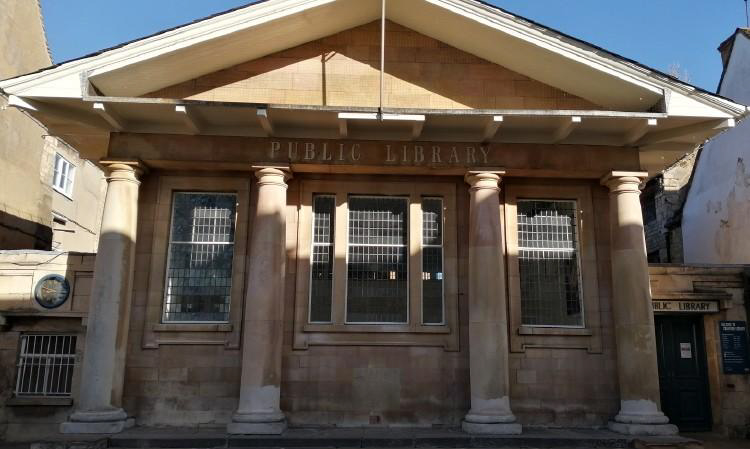

Library
The façade to the Library, the big Tuscan portico was built by W.D. Legg in 1804 at a cost of £1,500. It was allegedly influenced by Inigo Jones’s church in Covent Garden. It served as the open entrance to the butter market, the fish market and the shambles, four rows of butchers’ stalls extending all the way back to Broad Street. Lower wings either side of the portico housed the watch house (police station) and the house of the Beadle or constable, an office which was dispensed with in 1847.
During the course of the nineteenth century the shambles became progressively more dilapidated and in 1894 a technical instruction school was built at its northern end on Broad Street. This became the Stamford Museum in 1980 but it, in turn, was closed and a token few of its exhibits may be seen in the Library.
In the early years of the twentieth century the sides of the portico were filled in and the fish market and shambles converted to create the library which opened in 1906. The conversion was made possible by a grant of £2,500 from the trust of Andrew Carnegie, the Scottish- American industrialist and philanthropist who supported many libraries throughout the country.